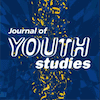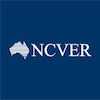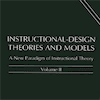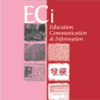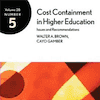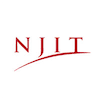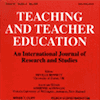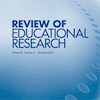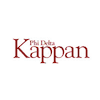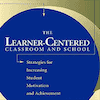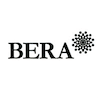About
Continuous improvement is our constant and daily challenge
Mission:
Implement technology projects that add value to our clients’ investment and exceed their expectations.
Vision:
Being a developer of projects that create a link between technology and people to raise their quality of life.
Values:
>> Responsibility
>> Excellence
>> Dynamism
>> roactivity
>> Honesty

Small Team, Huge Opportunity

Gunnar Counselman
Gunnar is a former Marine HUMINT Officer who served in Iraq, Bosnia, and the Horn of Africa before attending the Harvard Business School. While at HBS, Gunnar performed initial research for the book Disrupting Class by Clay Christensen and Michael Horn. After HBS, Gunnar transitioned to the civilian world as a consultant with Bain and Company before starting Fidelis.

Luke Jubb
Luke leads Fidelis’ training, onboarding and implementation for all new customers. Originally from the Bay Area, Luke is a former educator with over 15 years of experience working with schools. He has a BA and MA in Psychology.

Ulu Ventures
We like internet ventures that make information useful. We believe we are still early in the internet story and that making information useful will be one of the next waves of opportunity. Other areas of interest include internet-enabled consumer and business services, digital media, mobile, and online advertising.

Kapor Capital
Kapor Capital invests in seed and early stage startups whose success in business generates positive social impact. We are particularly interested in new platforms and in the use of information technology to achieve those goals. Other investments include: UniversityNow, Fundly, Sunglass, & Orchestra.
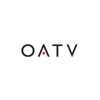
O’Reilly AlphaTech Ventures
OATV is in the business of funding disruptors, innovators, and hackers of the status quo. From open source to the early days of the web and its recent resurgence, O'Reilly Media has played a key role as trend spotter and advocate for putting world-changing technologies on the map. OATV is our effort to bring the legacy, resources, and relationships of O'Reilly to each investment we make. Other investments include: Foursquare, Codeacademy, & bitly.
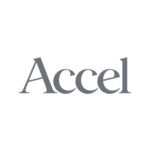
Accel
Accel is a leading venture capital firm that partners with exceptional founders with unique insights, from inception through all phases of private company growth. Atlassian, Braintree, Cloudera, Crowdstrike, DJI, DocuSign, Dropbox, Etsy, Facebook, Flipkart, Jet, Pillpack, Qualtrics, Slack, Spotify, Supercell, Tenable, UiPath, Venmo, and Vox Media are among the companies the firm has backed over the past 35+ years. The firm seeks to understand entrepreneurs as individuals, appreciate their originality and play to their strengths. Because greatness doesn't have a stereotype. For more, visit www.accel.com or www.twitter.com/accel.
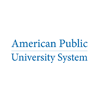
American Public University System
Service. Leadership. Relevance in a global society. These values define our mission at American Public University System. They guide how we educate and support more than 100,000 distance learners studying in 50 states and more than 100 countries. They shape the growth of our two institutions, American Public University and American Military University. They are a roadmap for how we prepare you for successful careers.
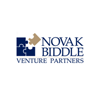
Novak Biddle Venture Partners
Novak Biddle Venture Partners provides equity financing and assistance to the management of young, information technology companies. They seek investment opportunities where the combination of ideas, dollars, experience, and relationships can create long-term, sustainable value. Other investments include: UniversityNow, 2tor, Parchment, & AddThis.

Paul Freedman

Roger Novak

Michael Horn

Anoop Jayadevan

Gunnar Counselman
Our core beliefs are informed by the latest in educational research
Fidelis’s platform has a perspective that is based on our core beliefs as a company. Our beliefs are supported by a combination of our personal experience, common sense, and research from both academic and commercial sources.
We believe that people learn best when:
- They have clear and important long-term objectives for their education
- They are embedded in a community of learners who are at various stages of mastering a field
- They have a personalized learning plan that sets incremental goals that build toward their long-term objectives
- They are coached and mentored by a combination of professionals, personal mentors, role models, and career guides
- They can earn badges and micro-credentials that signify the capabilities that they’ve learned through the course of their studies.
- Learning app content is delivered via a combination of reading, visual, auditory materials
- Individual courses have opportunities for in-course community engagement (learning app)
- Both formative and summative assessments are integrated throughout a learning experience
- There are major exams that require intense study and have credentialing consequences that impact employment (badge exams)
Supporting articles
We’ve assembled a list of studies, grouped by topic, that support the beliefs stated above. This is a continuous effort, so please feel free to contact us with any suggestions.
Long-term objectives
The Single Best Idea for Reforming K-12 Education
Steve Denning – Forbes, 2011
“The single best idea for reforming the k12 system is to change the goal from teaching a curriculum more efficiently to inspiring lifelong learning in students so that they are able to have full and productive lives in a rapidly changing economy.”
Pathways Linking Education and Work: A Review of Concepts, Research, and Policy Debate
Daniel Raffe – Journal of Youth Studies, Vol. 6, Iss. 1, 2003
“This paper reviews cross-national research and policy debates about pathways between education and work, and draws on this review to reflect on the utility of the pathways concept itself. “
Crazy Paving or Stepping Stones? Learning Pathways within and between Vocational Education and Training and Higher Education
Roger Harris, Linda Rainey, Robert Sumner – National Centre for Vocational Education Research, 2006
“This study focuses on the pathways–to and fro–between vocational education and training (VET) and higher education. It is predominantly qualitative. The report reveals the richness and complexity of ways individual learners use and exploit available options.”
Learning communities
Learning Communities in Classrooms: A Reconceptualization of Education Practice
Katerine Bielaczyc, Allan Collins – Instructional-design Theories and Models: A New Paradigm of Instructional Theory, Vol. 2, 2013
“In this anthology of scholarly works in the field of learning theory, the authors make the case for learning communities being essential to both the field and the individual master of the field.”
Building Learning Communities in Online Courses: The Importance of Interaction
Karen Swan – Education, Communication & Information, Vol. 2, Iss. 1, 2002
“Reports on student satisfaction, learning outcomes, and interaction quality for asynchronous classes. The findings support the need for community engagement.”
The Powerful Potential of Learning Communities: Improving Education for the Future
Oscar T. Lenning, Larry H. Ebbers – ASHE-ERIC Higher Education Report, Vol. 26, No. 6, 1999
“This report examines the importance of learning communities within institutions of higher education. Benefits include higher academic achievement, better retention rates, diminished faculty isolation. “
Collaborative Learning in Asynchronous Learning Networks: Building Learning Communities
Starr Roxanne Hiltz – New Jersey Institute of Technology, 1998
“This paper presents evidence that collaborative learning strategies actively mentored by an instructor, are necessary to build social relationships and a sense of community in order for World Wide Web-based courses to be as effective as traditional classroom courses.”
A Review of Research on the Impact of Professional Learning Communities on Teaching Practice and Student Learning
Vicki Vescio, Dorene Ross, Alyson Adams – Teaching and Teacher Education, Vol. 24, Iss. 1, 2008
“After an overview of the characteristics of professional learning communities (PLCs), this manuscript presents a review of 10 American studies and one English study on the impact of PLCs on teaching practices and student learning.”
Personal learning plans
The Copernican Plan: Restructuring the American High School
Joseph Carroll – The Phi Delta Kappan, Vol. 71, No. 5, 1990
“By redploying its staff members and students so that teachers can concentrate on teaching students, not on “covering” classes, the American high school can transform itself”
The Learner-Centered Classroom and School: Strategies for Increasing Student Motivation and Achievement
Barbara L. McCombs, Jo Sue Whisler – Jossey-Bass, 1997
“Schools are living systems- systems fundamentally in service to students.”
Putting Words in Their Mouths: The Alignment of Identities with System Goals Through the Use of Individual Learning Plans
Mary Hamilton – British Educational Research Journal, Vol. 35, Iss. 2, 2009
“Individual Learning Plans, originally a means of formative assessment, have become part of a system of performance indicators and function as a key mediating mechanism between local interactions and system goals.”


